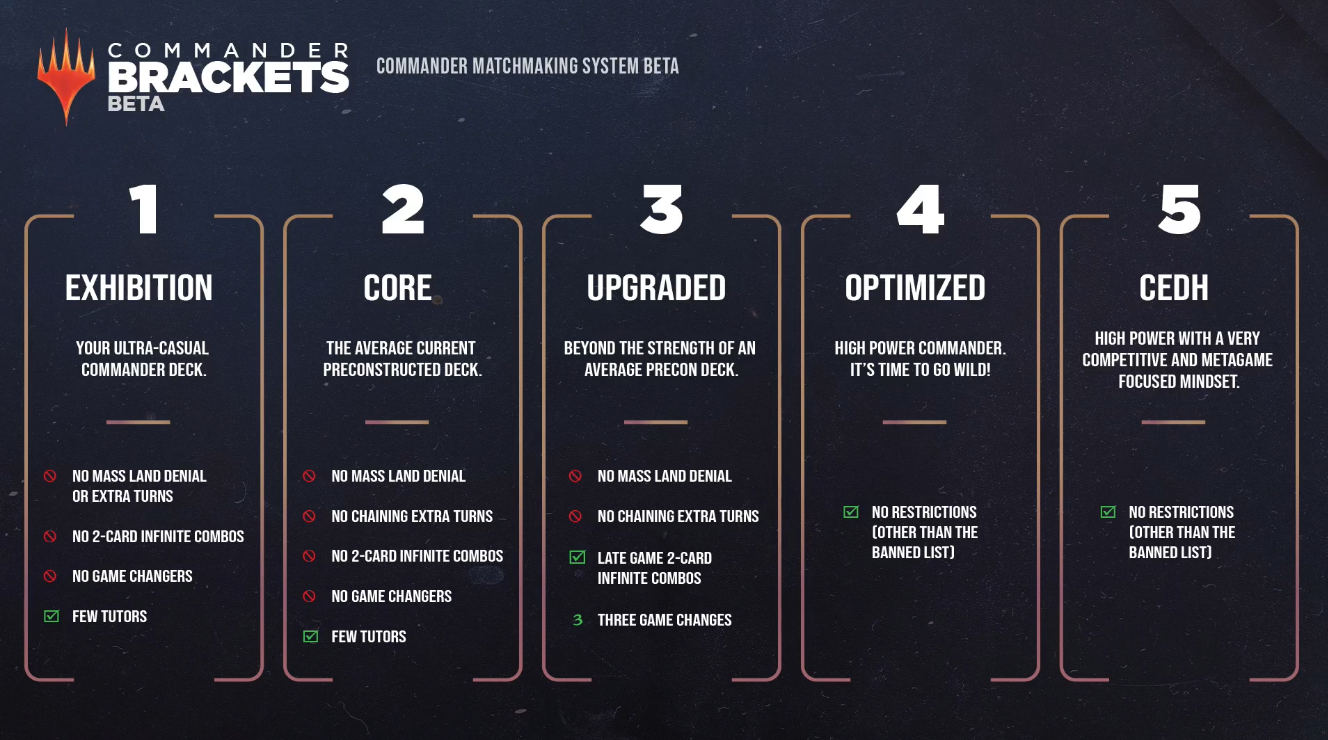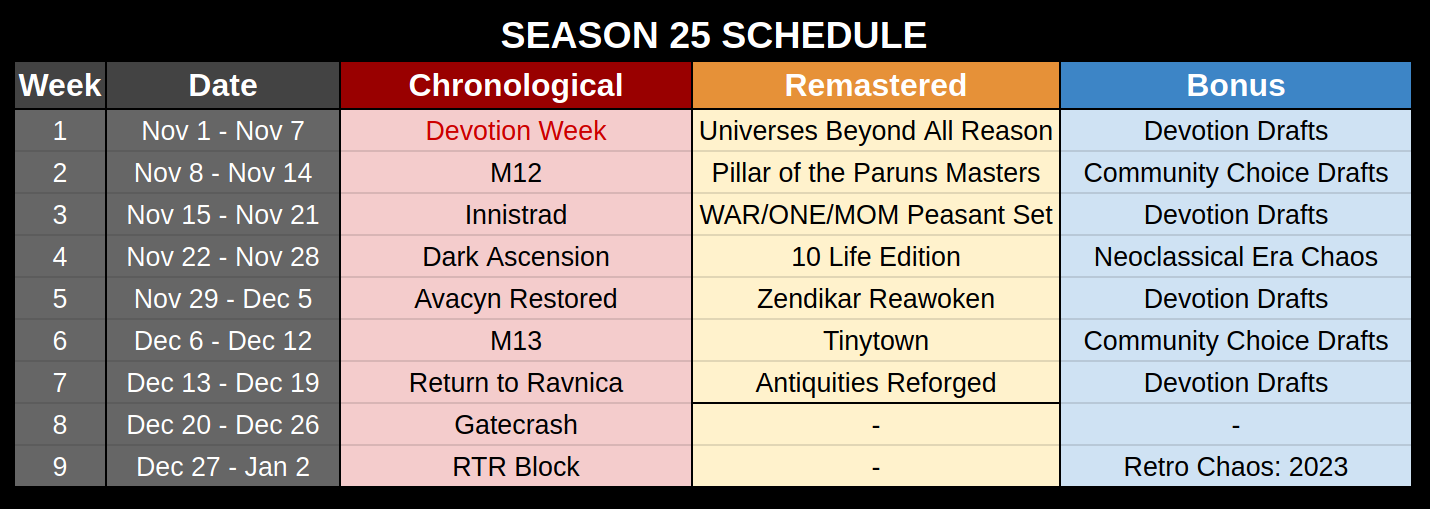-
Commander with low power brackets, no tutors, no infinite combos, and mostly budget decks.
-
Cube Draft.
-
Playing precons against the computer using Forge. I copy the names of the precons from a block, then play them against each other using a bit of randomization:
import itertools, random
decks = ["Deck A", "Deck B", "Deck C", ...]
matchups = list(itertools.combinations(decks, 2))
random.shuffle(matchups)
for i, (deck1, deck2) in enumerate(matchups, 1):
print(f"Match {i}: {deck1} vs {deck2}")
- Aside from the usual Theme Decks, some of the most interesting precons are Duel Decks, Pro Tour Collector Sets, Salvat 2005 and 2011, and Commander decks. You can find a full list of precon decks here.
- Penny Dreadful on MTGO when I want constructed but cheap play.
- I've played a bunch of Draft and Standard on MTG Arena but I didn't really enjoy it that much. It felt like a chore doing the dailies and just caring about getting the four wins per day.




This tool isn’t really needed given that there are multiple websites, where you can upload your collection and your deck, and they will tell you exactly which cards in the deck are missing from your collection.
For example:
So while a custom format legality checker is neat, if your goal is simply “which cards do I lack in this deck given my collection”, one of those sites will do just fine.